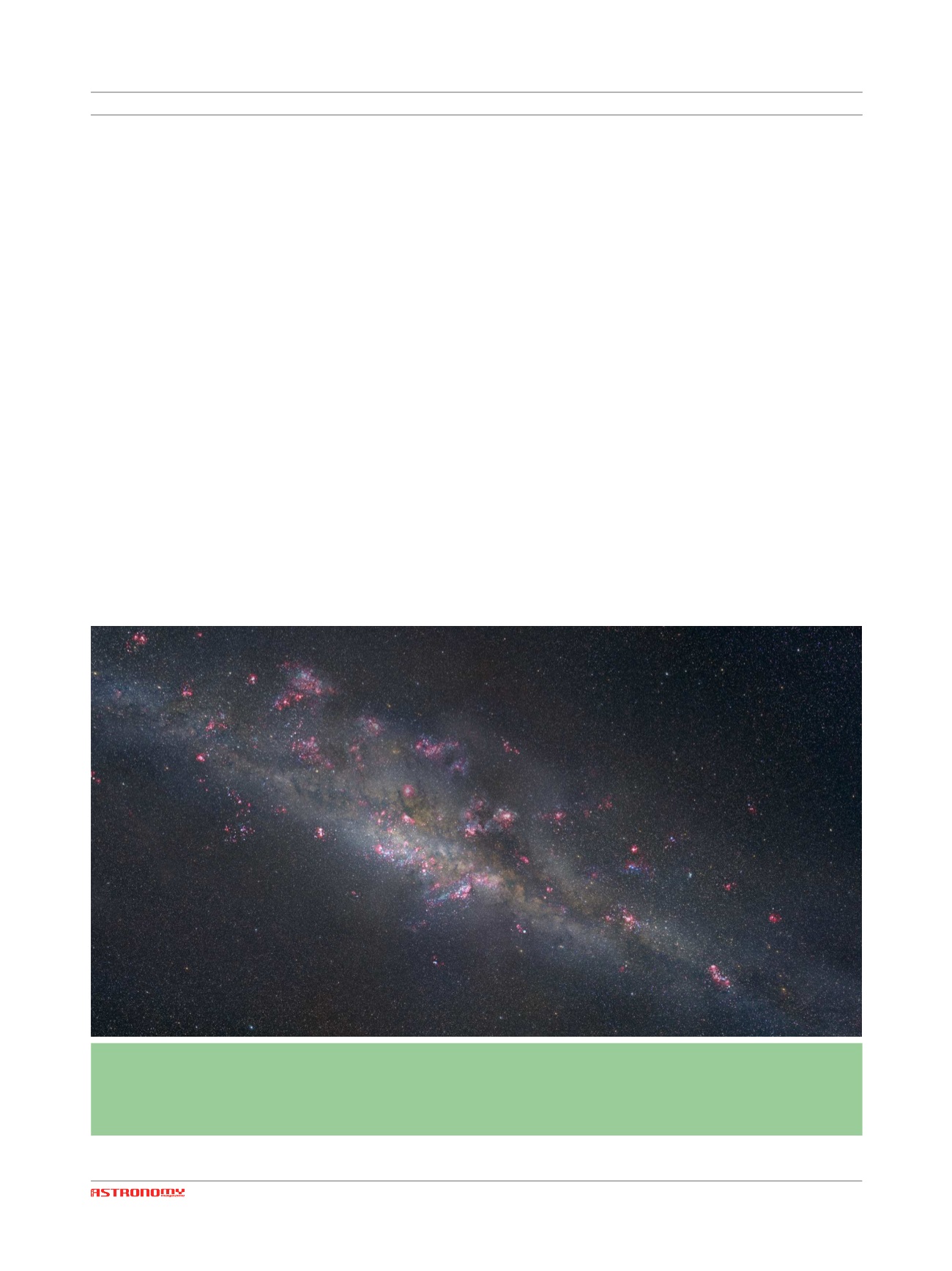

32
SEPTEMBER-OCTOBER 2017
SPACE CHRONICLES
clever thinking and a little help from
a cosmic alignment with a gravita-
tional lens. By applying a new com-
putational analysis to a galaxy mag-
nified by a gravitational lens, as-
tronomers have obtained images 10
times sharper than what Hubble
could achieve on its own. The results
show an edge-on disk galaxy studded
with brilliant patches of newly
formed stars.
“When we saw the re-
constructed image we said, ‘Wow, it
looks like fireworks are going off ev-
erywhere,’”
said astronomer Jane
Rigby of NASA’s Goddard Space
Flight Center in Greenbelt, Maryland.
Hubble spots
clumps of new stars
in a distant galaxy
by NASA/ESA
W
hen it comes to the distant
universe, even the keen
vision of NASA’s Hubble
Space Telescope can only go so far.
Teasing out finer details requires
T
his artist’s illustration portrays what the gravitationally lensed galaxy SDSS J1110+6459 might look like up close. A sea of
young, blue stars is streaked with dark dust lanes and studded with bright pink patches that mark sites of star formation.
The patches’ signature glow comes from ionized hydrogen, like we see in the Orion Nebula in our own galaxy. According to
new research, these distant star-formation regions are clumpy and span about 200 to 300 light-years. This contradicts earlier
theories suggesting that such regions might be much larger, 3,000 light-years or more in size. [NASA, ESA, and Z. Levay (STScI)]
















